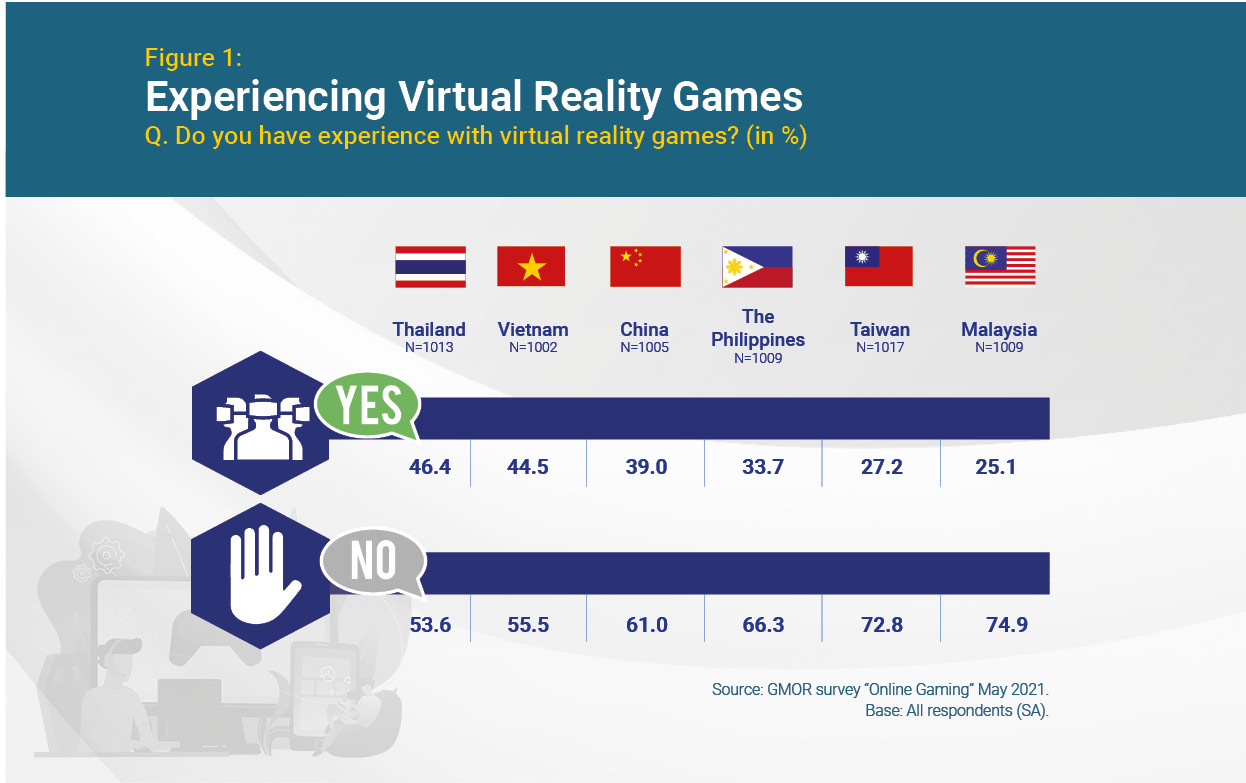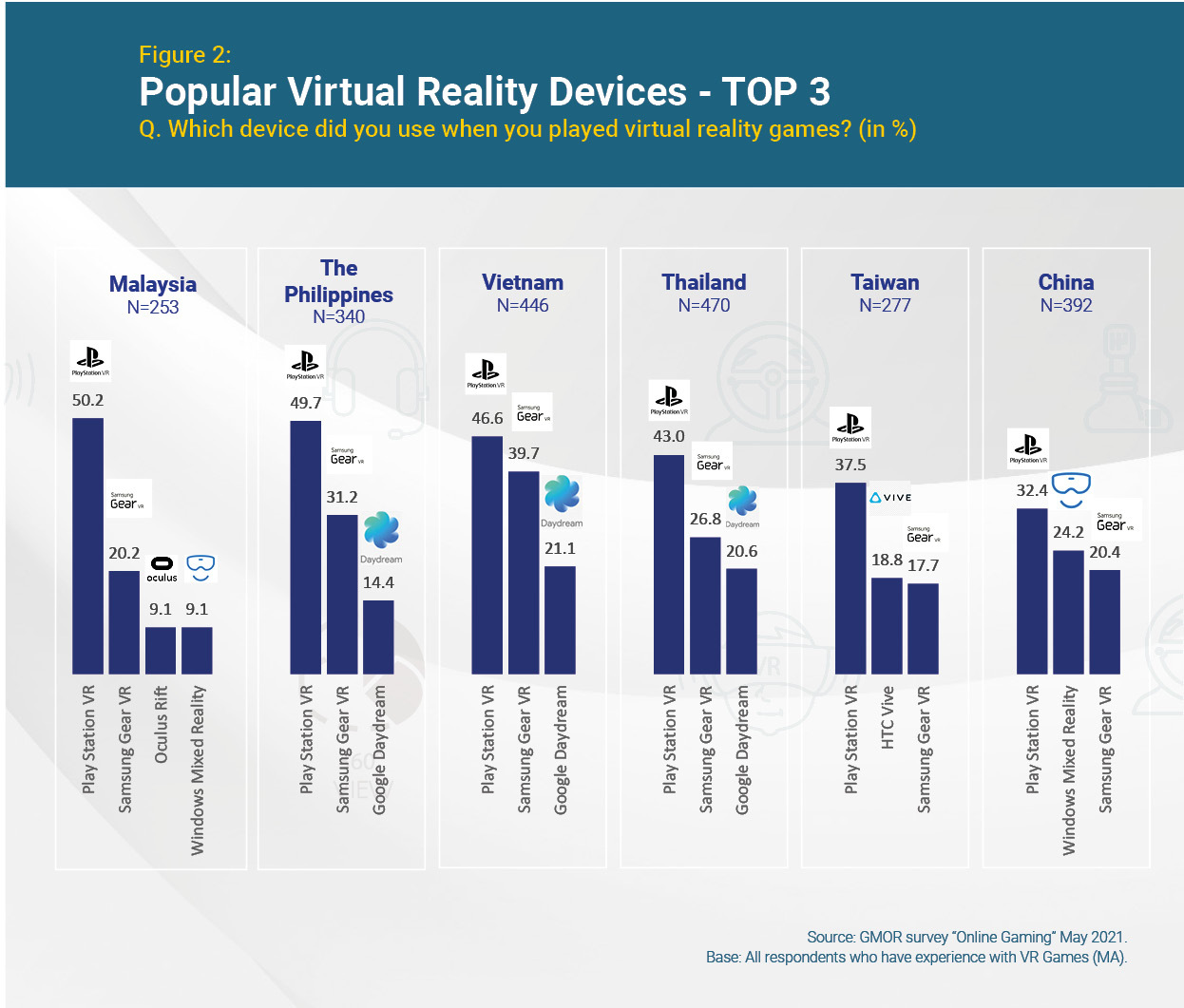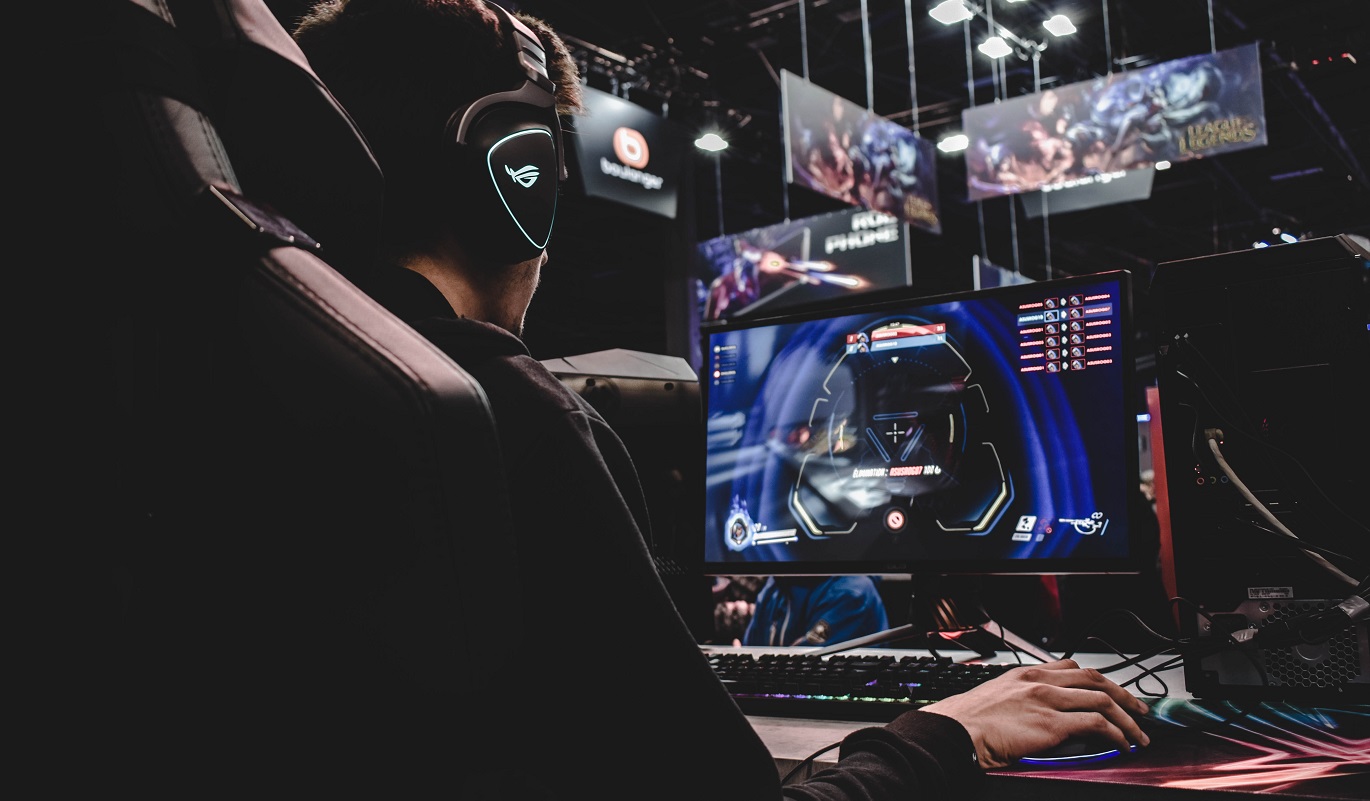Virtual Reality Gaming in Asia
2021/06/04

Photo by Lux Interaction on Unsplash
Virtual Reality Gaming in Asia
Virtual reality (VR) gaming is a relatively new genre of computer games where players experience an immersive, first-person perspective of the gaming action. This is made possible through a variety of devices and accessories, such as VR headsets, sensor-equipped gloves, motion detectors/controllers, and more. This technology allows gamers not only to manipulate the virtual environment but also to visualize the game action directly through the eyes of the characters.
The COVID-19 pandemic has forced many people to spend most of their time within the confines of their homes, and this has led to an increase in time (and dollars) spent on gaming, VR games included. The VR gaming market is expected to grow at a CAGR of 32.75% over the next five years. The worldwide user base of augmented reality and VR games is expected to reach 216 million users by 2025. A large portion of this growth will likely come from Asia.
GMO Research conducted a survey on gaming in six different countries across Asia: China, Malaysia, the Philippines, Taiwan, Thailand, and Vietnam. This article highlights key consumer trends in these different countries, and provides cross-country comparisons to give you detailed insights into consumer behaviour in the region.
When asked if they had experience with VR games, 46.4% of respondents in Thailand said yes, the highest rate among the countries surveyed. Next was Vietnam, where 44.5% of respondents said they had experience with VR games, then China at 39.0%, and the Philippines at 33.7%. VR games appear to be less popular in Taiwan and Malaysia, where only 27% and 25% have experience with such games, respectively.

Although VR games seem to be most popular in Thailand, of those surveyed Vietnam is the country with the highest growth in adoption rate. From 2019 to 2021 the number of people who have experienced VR games in Vietnam has grown from 42.2% to 44.5%.
The GMO survey also looked into popular VR devices among gamers in the different countries. The PlayStation VR seems to be widely popular across Asia, coming out top in all the countries surveyed. The top three most popular VR devices in the Philippines, Thailand, and Vietnam are the same. In the Philippines, PlayStation VR is the most popular, with 49.7% of VR gamers using this device, followed by Samsung Gear VR (31.2%) and Google Daydream (14.4%). For VR gamers in Thailand, the top three most popular VR devices are PlayStation VR (43%), Samsung Gear VR (26.8%), and Google Daydream (20.6%). In Vietnam, the most popular VR devices are PlayStation VR (46.6%), followed by Samsung Gear VR (39.7%) and Google Daydream (21.1%).

The top three VR devices in China are PlayStation VR (32.4%), Windows Mixed Reality (24.2%), and Samsung Gear VR (20.4%). In Malaysia, around half (50.2%) of VR gamers use PlayStation VR for playing VR games. Samsung Gear VR is the second most popular at 20.2%. Oculus Rift and Windows Mixed Reality are tied for third at 9.1%. The top three devices in Taiwan are PlayStation VR (37.5%), HTC Vive (18.8%), and Samsung Gear VR (17.7%).
Players in the VR gaming market are gunning for mainstream adoption, and it seems that mobile VR games will be the frontrunners. This is due to the fact that mobile VR games are some of the most affordable ways to get a taste of the VR experience. Moreover, in the Asian region, where mobile is king and 5G adoption is growing at a rapid pace, the mobile VR gaming sector will drive growth for the overall VR gaming industry. Although the pandemic has accelerated the adoption of VR games, challenges remain for this industry. Barriers to adoption, such as affordability, poor internet connection, and the availability of content, still exist, especially in emerging countries.
More game related articles:



